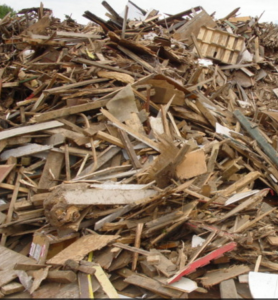Thu 26 May 2016
DON’T COOK WITH TRASH!
Posted by DonnaGRead other related stories: General Smoking Information
No Comments
DON’T COOK WITH TRASH!
I’m always eager to learn how customers find us and what past experiences they have with other wood suppliers but I sure wasn’t prepared for the recent comment I received from a customer in the South. Here’s what he had to say: “My big box store brand fruitwood smelled like a burning trash dumpster on my last smoke”! Hey, don’t cook with trash!
Seriously, I don’t make these things up!

Don’t cook with trash blog is about how the recycling community is not putting their products in pretty bags and selling it as cooking wood!
It got me thinking about the risks people take when shopping for wood products for a grill, smoker, smoker box, smoke tube, cold smoke generator, charcoal cooker, kamado, or other equipment. Now, I know we all have choices and some of us elect to educate ourselves to make the best choice for our family based on that information. Just like fruits and vegetables listed as organic, there are other criteria to factor into the decision to purchase non-organic over organic with the primary one being COST. The same is true for hormone-free meats and poultry, or free-range products. We try to educate ourselves on the difference, health risks, and cost parameter than we proceed with our purchase choice.
But how do you make the same educated choice on wood for cooking when there isn’t comparative information?
So, let me try to at least provide some comparative information from our product standpoint, as well as give you a checklist to use when making your next purchase.
Ponder These Questions
- Is the wood harvested in the USA?
- Is the product 100% hardwood? (You should never cook with softwoods or press woods as they can produce the increased potential for toxins to the food)
- Where do the woods come from? Are the pieces simply waste from another manufacturing process? (Think cabinets, flooring, furniture)
- Is the product 100% of the species listed on the bag or does it just say “hardwood”?
- Who is the manufacturer of the product?
- Is the name on the bag simply the distributor or do they actually make the product?
- What part of the tree is used to produce the product? All parts, outer cores, center cut?
- Is any process applied to the wood? Heat treatment, air drying, kiln dry, fumigation, pesticide?
- Does the product register moisture above 10%? If not, isn’t that simply “firewood”?
- It’s wood so what assurance do you have that it’s clean, bug-free, chemical free, and safe for cooking?
So why did our customer have such a bad experience with the box store wood purchase? Likely, the wood contained all parts of the tree with no assurance which exact parts were in the bag of wood he purchased. You could end up with all outer core and bark! If a hardwood mixture was purchased, he may not have had woods that were considered ideal for cooking and that would have altered performance and taste outcome as well. But the biggest variable is moisture. If the wood was kiln dried or “seasoned” it would have depleted all water content making it an ideal choice for the fireplace, not necessarily the cooking equipment. It’s so hard to control the temperature of a fire when the wood is excessively dry and contains bark as these variables lead to variation in combustion which means hotter temperatures, more sparks, and less flavor.
Next time you’re in the market for some wood product for cooking, take a bit of time to check the packaging or look at all the information on a website. Then ask yourself: do I want to eat anything cooked over this or will I simply be putting it in the trash?

Dr. Smoke, Don’t cook with trash and only purchase your cooking wood from a NON-recycler of wood products.